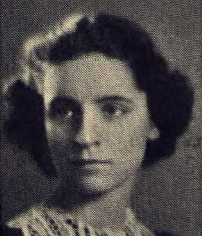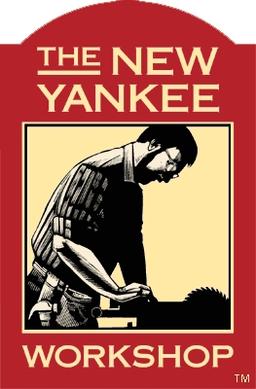
The Mariner program was conducted by the American space agency NASA to explore other planets. Between 1962 and late 1973, NASA's Jet Propulsion Laboratory (JPL) designed and built 10 robotic interplanetary probes named Mariner to explore the inner Solar System - visiting the planets Venus, Mars and Mercury for the first time, and returning to Venus and Mars for additional close observations.

227 is an American sitcom television series that originally aired on NBC from September 14, 1985, to May 6, 1990. The series stars Marla Gibbs as Mary Jenkins, a sharp-tongued, city resident gossip and housewife. Other main characters include her husband Lester, their daughter Brenda, landlady Rose Holloway, and neighbors Sandra Clark and Pearl Shay.
The Daytime Emmy Awards, or Daytime Emmys, are part of the extensive range of Emmy Awards for artistic and technical merit for the American television industry. Bestowed by the New York–based National Academy of Television Arts and Sciences (NATAS), the Daytime Emmys are presented in recognition of excellence in American daytime television programming. The first ceremony was held in 1974, expanding what was originally a prime time-themed Emmy Award. Ceremonies generally are held in May or June.

Madelyn Pugh, sometimes credited as Madelyn Pugh Davis, Madelyn Davis, or Madelyn Martin, was a television writer who became known in the 1950s for her work on the I Love Lucy television series.

The Twilight Zone is an American science fiction horror anthology television series created and presented by Rod Serling, which ran for five seasons on CBS from October 2, 1959, to June 19, 1964. Each episode presents a stand-alone story in which characters find themselves dealing with often disturbing or unusual events, an experience described as entering "the Twilight Zone," often with a surprise ending and a moral. Although predominantly science-fiction, the show's paranormal and Kafkaesque events leaned the show towards fantasy and horror. The phrase "twilight zone," inspired by the series, is used to describe surreal experiences.

The New Yankee Workshop is an American half-hour woodworking television series produced by WGBH Boston, which aired on PBS. Created in 1989 by Russell Morash, the program was hosted by Norm Abram, a regular fixture on Morash's television series This Old House.

V.I.P. is an American action/dramedy television series starring Pamela Anderson. Created by J. F. Lawton, the series aired in syndication for four seasons from 1998 to 2002.

Anthony Bourdain: No Reservations is an American travel and food show that originally aired on the Travel Channel in the United States and on Discovery Travel & Living internationally. In it, host Anthony Bourdain visits various countries and cities, as well as places within the U.S., where he explores local culture and cuisine. The format and content of the show is similar to Bourdain's 2001–2002 Food Network series, A Cook's Tour. The show premiered in 2005 and concluded its nine-season run with the series finale episode (Brooklyn) on November 5, 2012.
"The Devil's Hands Are Idle Playthings" is the eighteenth and final episode in the fourth season of the American animated television series Futurama, and the finale of the original run. It originally aired on the Fox network in the United States on August 10, 2003. The episode was written by Ken Keeler and directed by Bret Haaland, and it guest stars Dan Castellaneta, who reprises his role as the Robot Devil. Keeler was nominated for an Emmy Award for this episode, while the song "I Want My Hands Back" was nominated for an Annie Award.
The Primetime Emmy Awards, or Primetime Emmys, are part of the extensive range of Emmy Awards for artistic and technical merit for the American television industry. Bestowed by the Academy of Television Arts & Sciences (ATAS), the Primetime Emmys are presented in recognition of excellence in American primetime television programming. The award categories are divided into three classes: the regular Primetime Emmy Awards, the Primetime Creative Arts Emmy Awards to honor technical and other similar behind-the-scenes achievements, and the Primetime Engineering Emmy Awards for recognizing significant contributions to the engineering and technological aspects of television. First given out in 1949, the award was originally referred to as simply the "Emmy Award" until the International Emmy Award and the Daytime Emmy Award were created in the early 1970s to expand the Emmy to other sectors of the television industry.

The idea of sending humans to Mars has been the subject of aerospace engineering and scientific studies since the late 1940s as part of the broader exploration of Mars. Some have also considered exploring the Martian moons of Phobos and Deimos. Long-term proposals have included sending settlers and terraforming the planet. Proposals for human missions to Mars came from e.g. NASA, Russia, Boeing, and SpaceX. As of 2023, only robotic landers and rovers have been on Mars. The farthest humans have been beyond Earth is the Moon.

IRrelevant Astronomy is a web series produced by NASA's Spitzer Space Telescope. Each episode explains a general science concept or reveals science news relevant to Spitzer. The "IR" in the title stands for "infrared", making the title refer to "infrared-relevant astronomy." The first episode launched on January 15, 2008 on the Spitzer Space Telescope website.

Craig Tanner is an American film director, film producer, and editor. He is best known for his work as visual effects editor for the film Avatar and as producer and editor of God Sleeps in Rwanda. Tanner is also the co-founder of Digital Revolution Studios, a 3D production studio.

Antiques Roadshow is an American television program broadcast on Public Broadcasting Service (PBS) Public television stations. The program features local antiques owners who bring in items to be appraised by experts. Provenance, history, and value of the items are discussed. Based on the original British Antiques Roadshow, which premiered in 1979, the American version first aired in 1997. When taping locations are decided, they are announced on the program's website raising the profile of various small to mid-size cities, such as Billings, Montana; Biloxi, Mississippi; Bismarck, North Dakota; Chattanooga, Tennessee; Hot Springs, Arkansas; and Rapid City, South Dakota. Antiques Roadshow has been nominated 16 times for a Primetime Emmy.
"Hill Street Station" is the first episode of the first season of the American serial police drama Hill Street Blues. "Hill Street Station" originally aired in the United States on NBC on Thursday January 15, 1981, at 10:00 pm Eastern Time as part of a two-week five-episode limited-run pilot airing on Thursdays and Saturdays. The episode won numerous Primetime Emmy Awards, a Directors Guild of America Award, a Writers Guild of America Award, and an Edgar Award as well as Emmy Award nominations for film editing, music composition, and art direction. The episode was directed by Robert Butler and written by Michael Kozoll and Steven Bochco.

NASA X is a half-hour television program and vodcast developed by co-producers Michael Bibbo and Kevin Krigsvold in partnership with the NASA Langley Research Center. The program premiered in August 2012. It currently airs on DIRECTV, cable, iTunes, Hulu, NASA Television, and is available on certain aircraft as in-flight entertainment. The program is consistently one of the top downloaded programs on NASA.gov. It is currently starting its 7th season.
Laurie Fernandez is an American television news videographer and editor based in Los Angeles, California. She is a news videographer, editor and live truck engineer for television stations, KCBS 2 and KCAL 9 in Los Angeles.
Arashi Vision Inc., doing business as Insta360, is a camera company headquartered in Shenzhen, Guangdong, with offices in Los Angeles, Tokyo and Berlin. It makes action cameras, 360-degree cameras, editing software for mobile and desktop and 180-3D cameras.

Ralph is a science instrument aboard the robotic New Horizons spacecraft, which was launched in 2006. Ralph is a visible and infrared imager and spectrometer to provide maps of relevant astronomical targets based on data from that hardware. Ralph has two major subinstruments, LEISA and MVIC. MVIC stands for Multispectral Visible Imaging Camera and is a color imaging device, while LEISA originally stood for Linear Etalon Imaging Spectral Array and is an infrared imaging spectrometer for spaceflight. LEISA observes 250 discrete wavelengths of infrared light from 1.25 to 2.5 micrometers. MVIC is a pushbroom scanner type of design with seven channels, including red, blue, near-infrared (NIR), and methane.
OceanX is an ocean exploration initiative founded by Mark Dalio and Ray Dalio, founder of investment firm Bridgewater Associates, An initiative by Dalio Philanthropies, OceanX is a “mission to explore the ocean and bring it back to the world. OceanX combines science, technology and media to explore and raise awareness for the oceans and “create a community engaged with protecting them.” The initiative also supports and facilitates ocean research for scientists, science institutions, media companies and philanthropy partners.











